You are not alone if you were abused by a leader or member of the Church of Jesus Christ of Latter-day Saints. Many survivors are now speaking out—and you may have legal options to receive compensation for the harm the “Mormon Church” caused. If you’re searching for a lawyer to help you file a lawsuit against the LDS Church, legal support may be available.
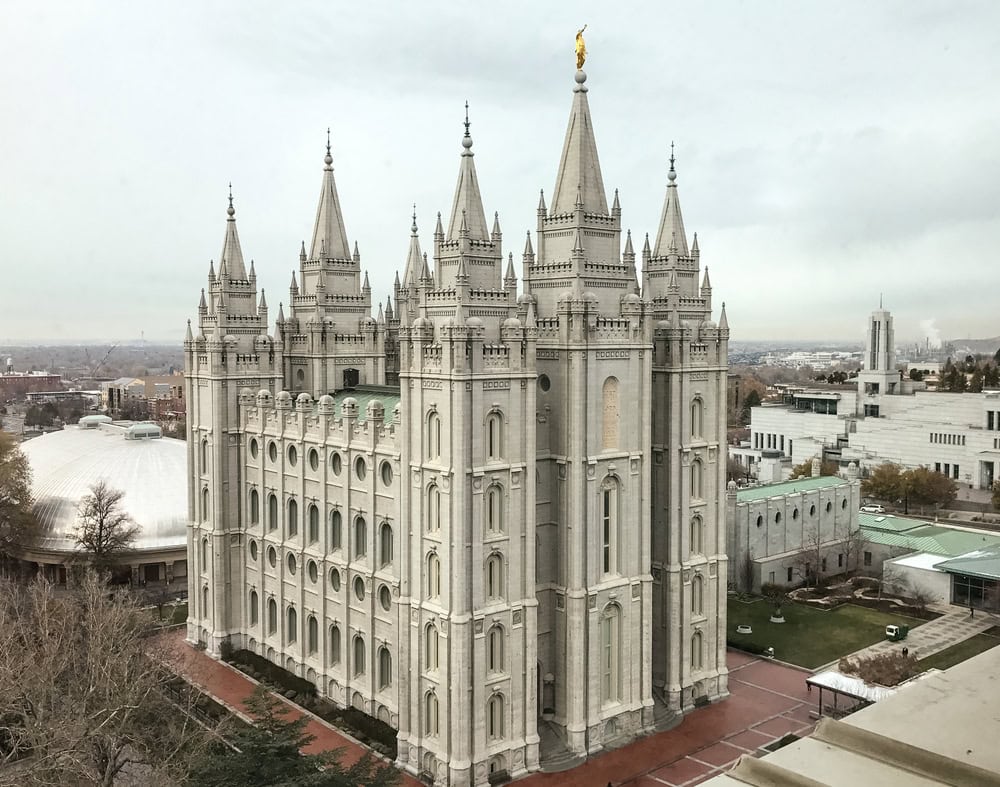
The power structure behind every religious denomination is only as morally sound as the people who are at the top. No human being is perfect. However, members of a church congregation expect those at the very top to be exemplars of moral purity.
Few religious denominations have betrayed that moral expectation more than the Church of Jesus Christ of Latter-day Saints (LDS Church), also known to many as the Mormon Church.
The LDS Church was supposed to be a sanctuary. A place of trust, community, and unwavering moral guidance. But for countless survivors, it became the setting for the betrayal of the most devastating kind: childhood sexual abuse, followed by cover-ups orchestrated by those in positions of spiritual and institutional power.
These failures have opened the door to legal accountability. Today, survivors are filing LDS sexual abuse lawsuits across the U.S. — often with the help of experienced abuse attorneys who understand how to sue the LDS Church.
Over the past two decades, more and more survivors have stepped forward, revealing deeply disturbing allegations committed by bishops, youth leaders, missionaries, and other members in positions of church authority.
What’s more, many of these allegations involve not just isolated acts of abuse but systemic efforts to silence victims, shield abusers, and suppress the truth through internal reporting systems, non-disclosure agreements, and intimidation tactics.
The result? A growing number of lawsuits have been filed against the LDS Church, many of which allege decades of negligence, concealment, and re-traumatization.
If you were harmed by a leader, member, or institution affiliated with the LDS Church, you are not alone.
Compensation and closure may be possible through legal action. Healing, though difficult, begins with coming forward and sharing your story confidentially.
Join Other Survivors Filing Sexual Abuse Lawsuits Against the LDS Church…
Your information is 100% confidential, and we may help connect you with a legal advocate who understands what you’ve been through.
Federal prosecutors in Utah and Ohio have charged Wade S. Christofferson, the brother of Latter day Saint apostle D. Todd Christofferson, with attempting to sexually exploit children, alleging he abused a child in Ohio more than a dozen times and engaged in sexually explicit communications and hands-on abuse involving a 7-year-old Utah girl. Investigators say a search of his home uncovered alarming evidence, including coded letters, explicit requests made during FaceTime calls, and a modified attic crawl space decorated with children’s writing. Christofferson was arrested in Utah, appeared in federal court, and will be extradited to Ohio to face the charges. [SOURCE: Salt Lake Tribune]
Bravo’s upcoming three-part docuseries Surviving Mormonism with Heather Gay will feature Real Housewives of Salt Lake City star Heather Gay as she investigates allegations of abuse and secrecy within the LDS Church. The series, premiering November 11 after an episode of Real Housewives, follows Gay as she interviews survivors, former church leaders, and ex-members to uncover what Bravo describes as “the dark history” of the church, says the Salt Lake Tribune.
Across the episodes, Gay speaks with former conversion therapy advocate David Matheson, reconnects with a friend who discloses his own abuse, and meets two sisters who say their father abused them while church leaders ignored their pleas for help. By the series’ conclusion, Gay pledges to take action. The docuseries, which will also stream on Peacock, highlights ongoing concerns about the LDS Church’s handling of sexual abuse claims and echoes broader accountability movements unfolding nationwide.
Former Oregon family physician David Farley, a longtime leader in his local Latter-day Saint (LDS) congregation, has been charged with 11 felony counts of sexual abuse involving three patients. Nearly 200 women and girls have accused Farley of misconduct over three decades of medical practice in West Linn, OR, where he worked at Providence Willamette Falls Medical Center, Legacy Meridian Park Hospital, and his own clinic.
After the Clackamas County District Attorney’s Office failed to secure an indictment in 2022, the Oregon Department of Justice reopened the case, leading to Farley’s 2025 arrest. The charges include offenses against minors and adult patients, with alleged incidents spanning from 2009 to 2020.
Farley and several Oregon healthcare institutions are also facing a $1 billion civil lawsuit filed by 180 former patients, who accuse the doctor of disguising abuse as medical treatment. Survivors have criticized local authorities for mishandling the initial investigation, which an independent 2024 report later confirmed was deeply flawed.
Russell M. Nelson, president of The Church of Jesus Christ of Latter-day Saints, died on Sept. 27. He was 101. His tenure was marked by rapid growth and visible policy shifts, including reversing a rule that had barred the baptism of children of same-sex couples and other efforts presented as steps toward inclusion. At the same time, his presidency faced mounting scrutiny over how the church handles reports of sexual abuse. A 2022 Associated Press investigation spotlighted serious flaws in the church’s response system. Survivor-led databases such as Floodlit have cataloged thousands of publicly reported allegations tied to LDS programs. Nelson’s era also overlapped with the Boy Scouts of America bankruptcy and settlement, where the LDS Church contributed to resolving scouting-related claims amid broader questions about institutional liability. For survivors, leadership changes do not alter your rights or deadlines. Civil claims depend on state law and evidence, and there may be time-limited windows to file. If abuse involved church settings or affiliated programs, documenting your experience and speaking with a qualified attorney can help you understand options for compensation, confidentiality, and accountability. Fill out the confidential, secure form on this page for a free case review.
Two Washington families have filed lawsuits against the LDS Church, alleging the church knowingly allowed a high priest with a history of child sexual abuse to continue working with children at a Seattle-area church and daycare in the 1980s. The priest was later convicted, but the families claim church leaders ignored early warnings and failed to act.
In a civil lawsuit involving over 170 former patients of Oregon doctor David Farley, the LDS Church is fighting a subpoena that could reveal whether church leaders knew about abuse allegations, Oregon Public Broadacsting reports. Plaintiffs allege Farley used his role as a trusted church leader to gain access to girls and young women under the guise of medical care. The church argues clergy privilege and jurisdictional limits protect the requested records. A Multnomah County judge will decide whether the church must disclose what it knew.
In other recent developments, PennLive.com reports that Shawn C. Gooden, a former LDS bishop, scout leader, and Harrisburg attorney, is facing child rape charges in Berks County. He has voluntarily resigned from the bar and has been officially disbarred in Pennsylvania.
An Arizona appeals court has revived a lawsuit accusing the LDS Church and two bishops of failing to report sexual abuse committed by a Bisbee man, Paul Adams, against his children. The case had previously been dismissed due to clergy-penitent privilege, but the appeals court ruled a jury should decide whether church leaders had knowledge of the abuse beyond protected confession. The ruling may set a precedent for how clergy reporting duties are interpreted when abuse disclosures extend outside confessional settings.
This Arizona ruling echoes a similar legal battle in Washington State, where courts are weighing whether the Catholic Church can withhold reports of child sexual abuse under clergy-penitent privilege, despite mandatory reporting laws requiring disclosure when abuse is known outside of confession.
Former Colorado Springs deputy DA and LDS church leader David George McConkie accepted a plea deal, avoiding prison time after admitting to attempted sexual assault of a child. He received five years of supervised probation, must register as a sex offender, and is barred from contact with minors. The judge cited his unemployment, disbarment, and family situation in lieu of jail time. The Denver Gazette covered the legal proceedings; the non-profit website, Floodlit has a profile on McConkie.
For over two decades, top Mormon men serving as Boy Scouts of America (BSA) executives allegedly knew about internal abuse records known as the “perversion files” — but may never have warned the LDS Church. These confidential files tracked sexual abuse allegations against scout leaders, including those operating in LDS-sponsored troops. According to investigative reporting by Floodlit.org, five LDS men held a paid liaison role between the BSA and the Mormon Church from 1963 to 1989, directly communicating with high-level church leaders. Yet in a 2012 sworn statement, the church claimed it first learned about these files in 1989. One of those BSA liaisons, John Fanning, also a Mormon bishop, was later convicted of child molestation.
These findings deepen public scrutiny over what the LDS Church knew, when it knew it, and what steps it did or didn’t take to protect children from sexual abuse within scouting and church programs.
Another investigation by Floodlit.org reveals that the LDS Church may have misrepresented the timeline of sexual abuse litigation against it. In 2012, top church official, Paul Rytting, stated under oath that the first sexual abuse lawsuit filed against the church occurred in 1989. However, Floodlit has uncovered two earlier cases: one in 1986 involving Trent Rogers, and another tied to Kenneth Ray that was originally filed on July 5, 1984.
This new evidence raises serious concerns about the church’s institutional memory and transparency regarding its handling of abuse claims. Whether the inaccurate 2012 statement was intentional or not, it highlights ongoing questions about the LDS Church’s efforts to acknowledge and account for its history of enabling abuse. If you want to go down the rabbit hole and learn more about the timeline of the Kenneth Ray lawsuits during the 1980s, read Floodlit’s investigation here.
Three updates provided by Floodlit.org deepen the picture of institutional sexual abuse within the Mormon church. First, Floodlit uncovered over $1.26 million in previously unknown LDS Church expenses tied to three child sex abuse settlements, revealing a behind-the-scenes letter in which an LDS risk manager invoked “gentleman’s agreements” with the Boy Scouts of America to share costs—costs that reportedly led to higher BSA registration fees in the ’80s and ’90s. Second, Floodlit exposed a coverup involving Edwin Dyer, a Mormon scoutmaster in Oregon accused of molesting 15 boys over 28 years; the church quietly paid $200,000 to one victim and spent over $58,000 in legal fees, without alerting authorities before Dyer was fatally shot by one of his victims in 1986. Finally, in a recent update about Oregon’s largest-ever sexual abuse lawsuit, involving more than 150 women and girls suing Dr. David Farley, a former Mormon stake high council member and family physician, last month, a Multnomah County judge ruled that Farley cannot be compelled to answer deposition questions about his involvement with the LDS Church. The decision, based on Fifth Amendment protections, raises ongoing concerns about institutional accountability, as many of Farley’s alleged victims say they knew him through church roles.
The Church of Jesus Christ of Latter-day Saints has reached a proposed settlement that could resolve more than 100 childhood sexual abuse lawsuits filed across California. The cases involve decades-old abuse allegations against LDS bishops, youth leaders, and volunteers. While the financial terms remain undisclosed, the settlement is expected to offer closure and compensation for survivors who came forward during California’s statute-of-limitations lookback window.
FLOODLIT reports that The Church of Jesus Christ of Latter-day Saints filed an appeal with the U.S. Court of Appeals for the Tenth Circuit after losing a federal lawsuit in Utah over insurance coverage for a $32 million sexual abuse settlement and $27 million in legal defense costs. The original case stemmed from the Church’s response to child sex abuse allegations in West Virginia involving convicted abuser Michael Jensen.
The church is seeking reimbursement from its insurers for nearly $90 million in total expenses related to that case. Although the West Virginia lawsuit cost the LDS Church about $59 million in settlement and legal fees, the Church is seeking up to $90 million from its insurers to cover not only that case but also hundreds of other abuse-related payouts it claims fall under the same coverage period. The Church argued that insurers were obligated to reimburse costs exceeding its $15 million self-insured limit. The appeal follows a District Court ruling that the insurance companies had no duty to indemnify the Church. FLOODLIT claims the LDS Church has paid at least $51 million in known sex abuse settlements since 1990, with hundreds more lawsuits still pending.
The nonprofit that documents and uncovers LDS Church sexual abuse, FLOODLIT, reported Charles Sheldon Bates, a longtime Mormon church member and Boy Scout leader in Salt Lake County, was arrested April 17 for allegedly sexually abusing four boys over a span of 14 years. Bates is accused of committing sexual abuse in multiple locations, including his home, vehicle, the Kearns Community Pool, and on Boy Scout trips. Court documents allege Bates also created child sexual abuse material (CSAM) featuring multiple victims. Police reportedly found 134 CSAM images in his possession, including images flagged by the National Center for Missing & Exploited Children. At the time of his arrest, Bates was affiliated with the Kearns Utah North Stake of the LDS Church. He remains in custody without bail. The case is the latest in a growing number of criminal investigations and lawsuits linked to sexual abuse in Mormon-affiliated programs.
The LDS Church is reportedly close to settling more than 100 sexual abuse lawsuits filed across six U.S. states since August 2024. According to court documents obtained by watchdog group FLOODLIT.org, both plaintiffs and church representatives filed joint motions in multiple cases on April 15 and 16, asking the courts to pause proceedings while they finalize the terms of a global settlement. The two sides reached a “settlement in principle” during an April 10 mediation, with plans to finalize by July 28. If completed, it would be the largest known sexual abuse settlement in LDS Church history. The lawsuits include disturbing allegations against over 20 bishops and senior leaders, including claims that church attorneys and officials interfered with law enforcement. This proposed resolution follows the recently revealed $32 million settlement in a separate West Virginia abuse case, which cost the Church an additional $27 million in legal fees (see below).
Even if a large settlement is finalized, survivors who haven’t yet come forward may still have time to file a claim—especially in states with open or extended statute-of-limitation windows.
The Utah District Court found that The Church of Jesus Christ of Latter-day Saints cannot compel its insurers to cover a settlement related to child sexual abuse in West Virginia. The case centered around abuse committed by Michael Jensen (see entry below), who was affiliated with the LDS Church. After settling with victims, the Church sued its insurers, claiming they were obligated to cover the payout. However, the court ruled that the insurance providers had no duty to defend or indemnify the Church under their policies. The decision effectively leaves the LDS Church financially responsible for the settlement.
While the ruling does not impact the validity of other survivors’ cases, it may influence how the Church approaches future settlements and defenses, potentially making it more cautious in negotiations, or more likely to litigate cases rather than settle quickly.
FLOODLIT.org, a non-profit organization investigating sexual abuse in The Church of Jesus Christ of Latter-day Saints, revealed that the LDS Church spent nearly $60 million to defend and settle a major child sexual abuse lawsuit involving convicted predator Michael Jensen. Jensen, a Mormon church member and grandson of a senior church employee, was convicted in 2013 of abusing multiple children in Utah and West Virginia. Despite early warnings—including a psychologist’s assessment that he was likely to reoffend—church leaders allowed him to continue serving in trusted roles with children. In 2018, the church quietly paid a $32 million mid-trial settlement to resolve civil claims brought by six families. (The Church spent the other $27 million on legal fees.) The case, which involved years of alleged cover-ups and misuse of the Church’s internal abuse “help line,” is now considered the largest known sexual abuse payout in LDS Church history, far surpassing its previous reported high of $4 million. Kudos to Floodlit.org for the team’s painstaking work, analyzing over 2,700 pages of court recrords.
As mentioned in the news entry above, a judge ruled against the LDS Church in its lawsuit seeking up to $90 million from two insurers for defense fees and settlement payouts in the Jensen case.
The U.S. Judicial Panel on Multidistrict Litigation (JPML) has denied (PDF link) a request to consolidate nearly 50 child sexual abuse lawsuits against the Church of Jesus Christ of Latter-day Saints into a single federal MDL (multidistrict litigation). Survivors and their attorneys had hoped that combining the cases in one court would streamline the discovery process, minimize conflicting rulings, and create a more efficient path toward justice. However, the JPML concluded that the allegations span over five decades and involve too many differing circumstances to be handled as one unified case. For survivors, this means their lawsuits will move forward individually in separate courts across the country. While this may slow down some cases and increase legal complexity, it does not reduce survivors’ legal rights. In some instances, the ruling could allow for more personalized outcomes. Survivors are encouraged to speak with attorneys we partner with who are experienced in LDS Church abuse cases to understand what this decision means for their claim.
A recent Arizona Court of Appeals ruling has revived part of a lawsuit against the LDS Church and its members, signaling a major shift in how mandated reporting laws may be interpreted going forward. The case involves three children who endured years of sexual abuse by their father, Paul Adams, a former Border Patrol agent, while several members of the local Mormon congregation either knew or suspected the abuse and failed to report it. The court rejected a lower court’s interpretation that Arizona’s Mandatory Reporter Law only applies to professionals, instead ruling that anyone who assumes responsibility for a child—such as a Sunday school teacher or church volunteer—may have a legal obligation to report suspected abuse.
Scott Owen — a former LDS Church leader and licensed therapist — was sentenced to at least 15 years in prison by Utah’s Fourth District Judge Kraig Powell in Provo, for sexually abusing multiple patients under the guise of therapy. Survivors, many of whom were referred by LDS bishops and struggling with their sexuality and faith, say Owen manipulated their beliefs and used his authority to normalize abuse. While the LDS Church was not a defendant, this case raises serious concerns about the church’s referral practices and lack of oversight over therapists paid with church funds.
A wave of new lawsuits has been filed against the Church of Jesus Christ of Latter-day Saints (LDS) in California, alleging widespread sexual abuse by church leaders. The lawsuits stem from a three-year legal look-back window, which temporarily allowed survivors of childhood sexual abuse to file claims regardless of when the abuse occurred. Nearly 100 survivors have now come forward with accusations, painting a disturbing picture of systemic abuse and institutional cover-ups within the LDS Church.
Three siblings are asking the Arizona Court of Appeals to revive their lawsuit against a Mormon bishop and physician, John Herrod, who they say failed to report years of abuse by their father, Paul Adams. The children’s legal team argues that Herrod, acting as both their family doctor and a local LDS bishop at a small congregation in Bisbee, lost his legal right to keep the father’s confession private when he disclosed it to the children’s mother and urged her to call the police. The plaintiffs say this action waived any clergy-penitent privilege, meaning Herrod should have reported the abuse himself.
The lawsuit, filed in 2021, also targets the LDS Church, claiming leaders were aware of the abuse for years but chose to protect the church’s image instead of intervening. Herrod’s legal team said he was spiritually prohibited from reporting the confession and that his actions did not break confidentiality. The court is also weighing whether to allow new testimony from the now-teenaged children, who were too young to speak for themselves when the case was first filed. A final ruling from the three-judge panel is still pending.
A new $25 million federal lawsuit filed in Eugene, Oregon, accuses the LDS Church of failing to report child sexual abuse after a church leader allegedly received reports about an adoptive father’s misconduct but took no action. The victim was placed in the Ridgefield, Washington, home of Craig and Jenny Ford, where she was later adopted and subjected to repeated abuse. Despite the family’s active involvement in a local LDS ward and the mother allegedly notifying Bishop Wade Pickett, no report was made to authorities. The abuse continued for months after the girl was taken to Oregon. The case highlights ongoing allegations that the church’s internal systems protect abusers rather than victims.
Attorneys representing survivors of sexual abuse by members of the LDS Church have petitioned the Judicial Panel on Multidistrict Litigation (JPML) to consolidate 48 federal lawsuits into a single multidistrict litigation (MDL) in the Central District of California. The lawsuits, filed across nine federal districts, allege a widespread cover-up by the LDS Church, including use of its internal “Help Line” to suppress abuse reports and protect abusers. Plaintiffs argue that consolidation is needed to streamline pretrial proceedings, prevent inconsistent rulings, and address shared questions about the Church’s internal policies and alleged destruction of evidence. They cite California’s favorable laws for survivors, the many cases already filed there, and experienced judges as reasons for centralization. If approved, this MDL could become one of the largest sex abuse proceedings against a religious institution in U.S. history.
The LDS Church is under fire as survivors come forward with decades of abuse allegations and cover-up claims. Recent lawsuits and exposés reveal church leaders shielded abusers and silenced victims, sparking calls for transparency and justice.
Samuel Bateman, a polygamous religious leader who claimed more than 20 spiritual “wives,” including girls as young as nine, faces up to 50 years in prison after pleading guilty to a years-long scheme involving child exploitation and kidnapping.
Dr. David Farley, a once prominent OB-GYN and esteemed member of the LDS church in Oregon, is facing a nearly $1 billion lawsuit with a plaintiff class of more than 170 of his former patients, who allege sexual abuse by him.
Many still refer to the Church of Jesus Christ of Latter-day Saints as the “Mormon Church.” However, church leaders have officially discouraged using that term since 2018. President Russell M. Nelson stated that nicknames like “Mormon” detract from the faith’s central focus on Jesus Christ.
But critics argue that the shift is about more than theology. The term “Mormon” carries cultural baggage — including historical ties to polygamy and racially exclusionary policies, such as the church’s priesthood ban for Black men (lifted only in 1978). More recently, the church’s involvement in covering up sexual abuse has drawn national scrutiny, adding to reputational damage.
Despite this, we use “Mormon Church” throughout this guide to help ensure that people, especially survivors or family members searching for Mormon Church sexual abuse lawsuits, can find accurate, timely legal information.
Whether you’re inside or outside the LDS faith, this page exists to help you understand your legal rights and options.
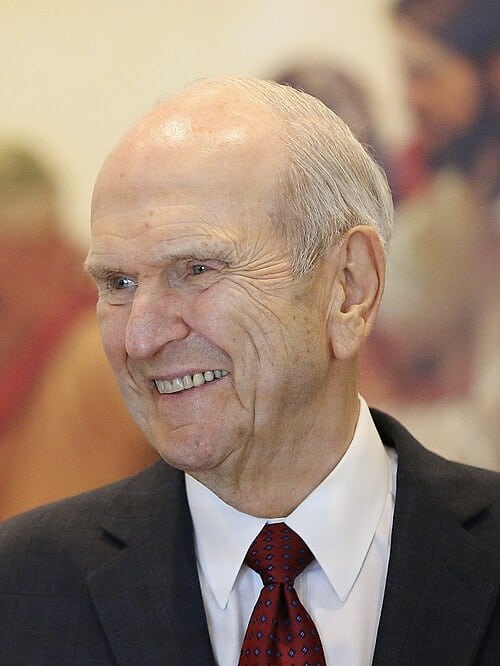
Several high-profile lawsuits and settlements demonstrate both the scope of abuse within the LDS Church and the growing legal accountability survivors have achieved.
A Riverside County jury awarded $2.28 billion to a woman who was abused by her stepfather from ages 5 to 14. The abuse occurred at home and on LDS Church property, where her parents were active members. The plaintiff alleged that multiple church leaders failed to report the abuse, instead urging her to forgive her abuser and warning that disclosure would harm her family. The abuse stopped only when she confided in her basketball coach, who reported it in 1997. The stepfather pled guilty to 55 counts and served three years in prison.
The jury award included $836 million in compensatory damages and $1.44 billion in punitive damages. The LDS Church denied wrongdoing but settled with the plaintiff for $1 million; her mother settled separately for $200,000. The case remains one of the largest known verdicts involving a religious institution.
The LDS Church initially agreed to contribute $250 million to the Boy Scouts survivor trust, part of BSA’s $2.4 billion plan to compensate 82,000 abuse survivors. This would have been one of the largest contributions by a religious institution in U.S. history. However, in August 2022, U.S. Bankruptcy Judge Laurie Selber Silverstein rejected the settlement, ruling that it attempted to release the LDS Church from liability beyond Scouting-related claims. The BSA later revised its plan to exclude the LDS payment.
Impact for Survivors: While the LDS Church avoided the $250 million payment, it still gained some liability protection within the BSA bankruptcy. Survivors can still pursue lawsuits directly against the church outside of the Scouting context.
The LDS Church agreed to a $1.1 million settlement in a case brought by a man abused as a preschooler in the 1980s by a teenage volunteer in his Tacoma ward. His parents reported it to their bishop, who admitted the volunteer had prior accusations but discouraged them from contacting police.
The LDS Church reached a confidential settlement with six families who alleged that church officials ignored years of abuse committed by Christopher Michael Jensen. Plaintiffs said church leaders knew of Jensen’s prior convictions and allegations but failed to warn or protect children. The case ended during trial in January 2018, with terms sealed by court order.
Multiple Navajo Nation members sued the LDS Church, alleging abuse while enrolled in the Indian Student Placement Program (1954–2000), which placed about 50,000 Native children in LDS foster homes during school years. Survivors reported abuse the church failed to prevent or address. By 2018, several cases were settled confidentially, with no admission of wrongdoing by the church.
These cases show that survivors of LDS Church abuse can hold the institution accountable. While many settlements remain sealed, legal action has already led to compensation and national attention. If you believe you have a case, a qualified LDS sexual abuse attorney can review your options.
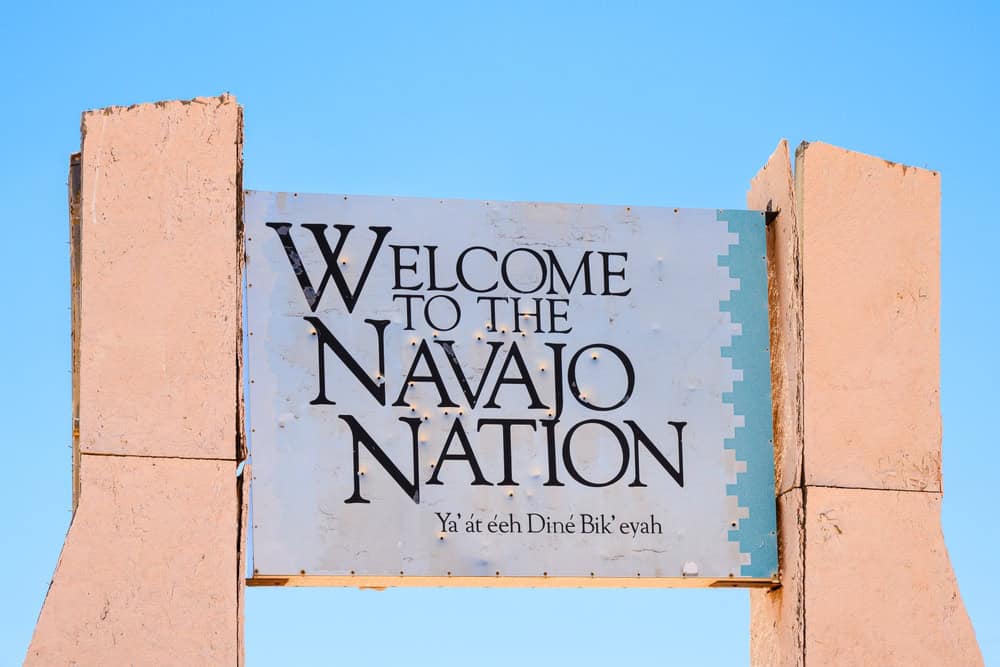
Survivors of abuse in the Mormon Church describe a common pattern: abuse by someone in authority (such as a bishop, youth leader, or missionary companion), followed by institutional silence, coercion, or misdirection. These experiences aren’t isolated. They reflect systemic issues in how the LDS Church handles — or more often, fails to handle — sexual abuse allegations.
At the center of much of the criticism is the LDS Church’s so-called “help line.” Established in the mid-1990s, the line was designed for bishops and other lay leaders to seek guidance when someone disclosed child sexual abuse. However, the line routed calls directly to the church’s attorneys at a Salt Lake law firm, not to licensed counselors or child protection agencies, as an AP investigation revealed.
Instead of advising bishops to report sexual abuse to police, the help line has often prioritized protecting the church from liability. In multiple lawsuits, plaintiffs have alleged that the church used this line to suppress mandatory reports and coach bishops on how to avoid mandatory reporting requirements, a tactic cited in multiple LDS Church sexual abuse lawsuits.
In the 2022 Paul Adams case (see above: Arizona Appeals Court Hears Case Against Mormon Bishop Accused of Failing to Report Child Abuse), the hotline was used after Adams admitted to bishops that he was sexually abusing his daughters. Rather than notifying law enforcement, the bishops were allegedly advised by the church’s legal team to remain silent due to “clergy-penitent privilege.” This legal advice allegedly allowed Adams to continue the abuse for years.
According to the AP report (per Business Insider), LDS Church protocol suggested that employees “never advise a priesthood leader to report abuse. Counsel of this nature should come only from legal counsel.”
The help line was established when reports of sexual abuse cases were increasing, and outcomes in lawsuits often awarded millions of dollars in damages to victims, the AP report stated.
Survivors say the LDS Church’s teachings about chastity, repentance, and church discipline create a culture of shame and silence, and institutional loyalty that suppresses abuse disclosures. Victims are often told to “forgive” their abusers or are made to feel responsible for the abuse, particularly in cases where sexual purity is emphasized above personal safety.
In some cases, survivors have reported being pressured into signing non-disclosure agreements (NDAs) or facing excommunication threats if they went public. These tactics not only silence victims but also prevent others from coming forward, further enabling abusers.
If you or someone you love has experienced abuse by someone affiliated with the LDS Church, you are not alone, and you do not have to stay silent. SurvivorsRights.com may help connect you with an attorney who understands what you’ve been through and can help you explore your legal options confidentially and compassionately.
One of the unique structural aspects of the LDS Church is its reliance on lay clergy, meaning bishops and church leaders are not trained professionals. Most bishops are volunteers, often with no background in mental health, social work, or law enforcement.
This model creates a dangerous dynamic: individuals in significant positions of spiritual power are entrusted with handling abuse disclosures, despite having no professional qualifications or safeguards in place. As a result, abuse disclosures are sometimes minimized, ignored, or dealt with internally rather than reported to the authorities.
Numerous lawsuits have argued that the LDS Church’s first priority in abuse cases is institutional protection. Documents uncovered in litigation show church attorneys developing strategies to protect the church’s reputation, often at the expense of victims’ welfare. In some cases, abusers were allowed to remain in positions of trust, moved to other wards, or quietly released without explanation.
Critics say the church’s vast legal and financial resources to settle cases, avoid public trials, and shield high-level leadership from scrutiny reveal a pattern of systemic cover-up, not just isolated failures.
If you or someone you love experienced abuse involving the LDS Church, you’re not alone, and it’s not too late to seek help. SurvivorsRights.com may help you connect with attorneys who can guide you through your legal options with compassion and confidentiality.
Reports of sexual abuse in the LDS Church extend beyond chapels and private homes. They have also surfaced across a wide range of church-sponsored programs, youth groups, and missionary settings. These environments are where adult leaders wield significant authority over minors. Survivors have increasingly reported that these programs created conditions where predators could exploit trust, religious reverence, and institutional insulation to commit abuse unchecked.
Here are some of the most significant LDS-affiliated programs linked to abuse:
As mentioned in the above section on notable settlements and lawsuits, this now-defunct program, officially called the “Lamanite Placement Program,” placed tens of thousands of Native American children into white LDS families from the 1940s through the 1990s… Lawsuits filed by Navajo Nation citizens claim the church used its authority and influence to avoid scrutiny and silence victims.
The LDS Church was one of the largest sponsors of BSA troops in the United States until it formally ended the relationship in 2019. LDS-sponsored scouting programs were implicated in hundreds, if not thousands, of sexual abuse claims filed as part of the BSA’s bankruptcy case. In 2022, the LDS Church offered a $250 million contribution to the BSA survivor fund…
These gender-specific youth programs are central to LDS life, preparing teenagers for missions, temple ordinances, and adult responsibilities. Survivors report being groomed by leaders, including teachers, youth advisors, and priesthood holders, some of whom were later transferred quietly…
Church-run camps and weekend retreats, often held in isolated, overnight settings, have been the backdrop of multiple abuse reports. These programs placed minors under the supervision of adult leaders with little external oversight…
Many missionaries are teenagers or young adults placed in highly structured, often isolated environments. Reports have emerged of:
Notably, former MTC President Joseph Bishop was accused of sexually assaulting a sister missionary in the 1980s…
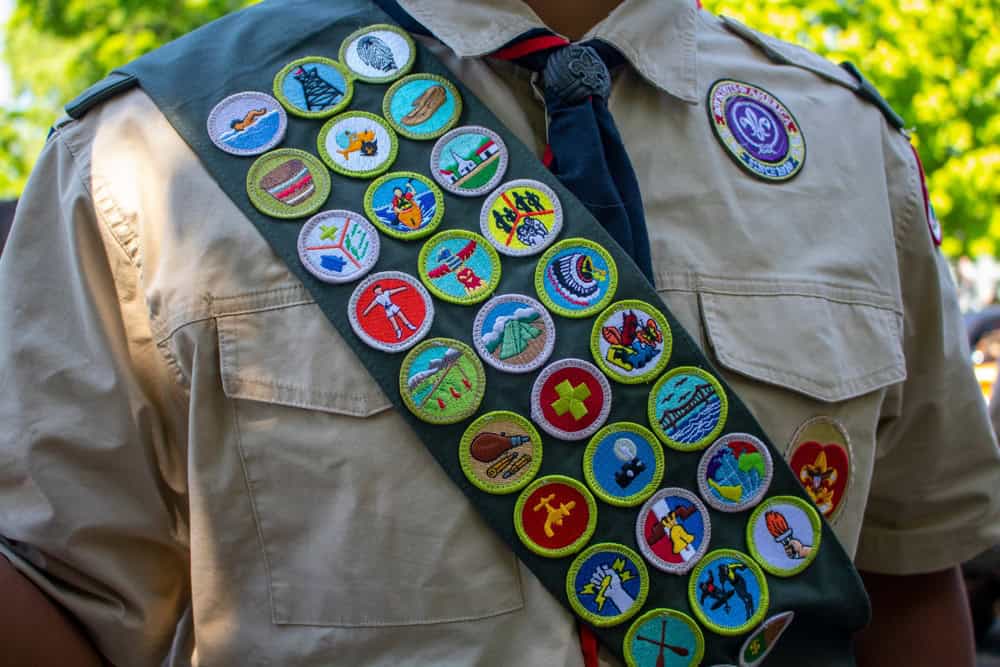
The sexual abuse crisis within the Church of Jesus Christ of Latter-day Saints has unfolded over decades, marked by repeated patterns of abuse, institutional cover-ups, and legal efforts to hold the church accountable. Below is a timeline of key events that have shaped the growing legal and cultural reckoning within the Mormon Church.
As more survivors speak out and courts begin to chip away at the legal defenses historically used by the LDS Church, public awareness is growing. Church policies and internal procedures are now under intense scrutiny, and legislative reforms in several states are being pushed to remove religious exemptions in mandatory reporting laws.
This timeline is still unfolding. Your voice and your story could be part of the next chapter toward justice and change.
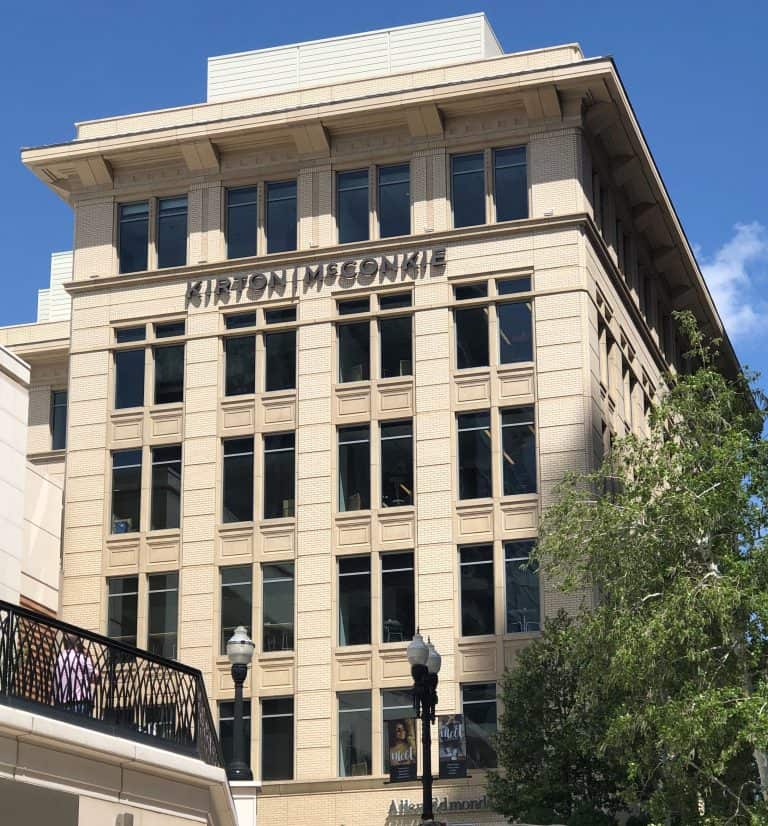
The Church of Jesus Christ of Latter-day Saints (LDS Church) is facing a surge of sexual abuse lawsuits, as survivors increasingly challenge the institution’s history of cover-ups, internal reporting procedures, and failure to protect children.
As of 2023, independent estimates place the LDS Church’s total wealth at approximately $265 billion. That’s up nearly $29 billion from the previous year. This extraordinary figure reinforces what survivors and advocates have long asserted: the Church has the financial means to compensate victims, but has often chosen not to, settling selectively and as quietly as possible.
When large religious institutions like the LDS Church face widespread abuse claims, there are two primary legal approaches:
Given the wide-ranging nature of LDS abuse cases (different states, leaders, and church programs), MDL is often more appropriate than a class action.
Note: On April 3, 2025, the Judicial Panel on Multidistrict Litigation denied the request to consolidate LDS Church sexual abuse cases into an MDL. Still, survivors may pursue individual lawsuits in state or federal court and may be eligible for compensation.
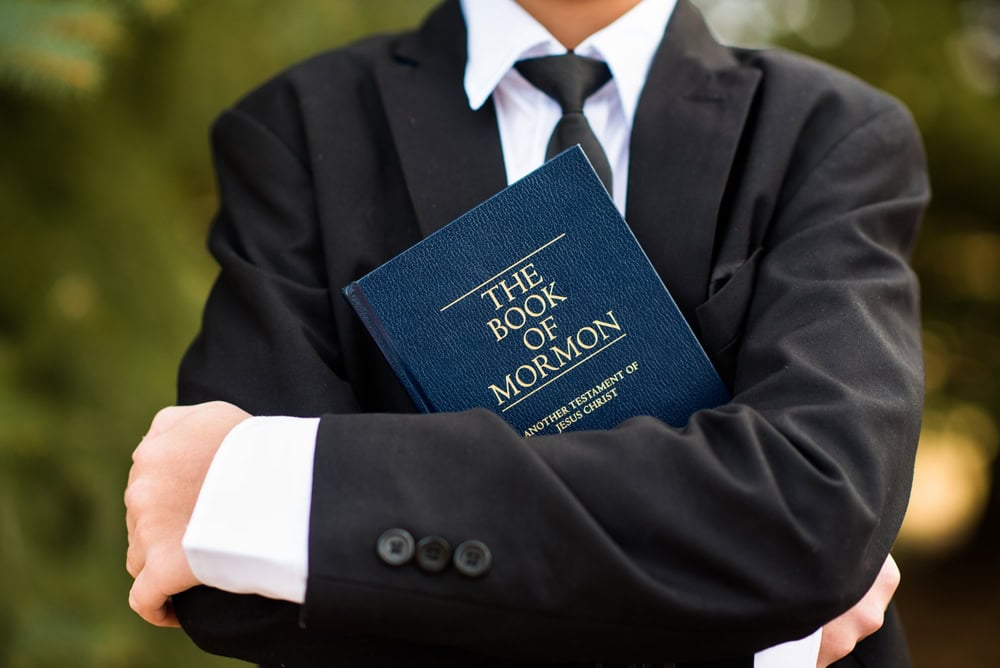
If you were sexually abused by someone affiliated with the Church of Jesus Christ of Latter-day Saints (LDS Church)—whether recently or decades ago—you may be eligible to file a lawsuit. Many survivors wonder, “Do I have a case?” or “Is it too late?” Thanks to new laws and legal victories, the answer may be yes.
More survivors than ever are stepping forward and filing claims against the Church of Jesus Christ of Latter-day Saints.
Sexual abuse lawsuits against the LDS Church focus on institutional negligence, not just the individual perpetrator. That means you may have a case if:
It’s not just about what happened. It’s also about what the LDS Church did (or didn’t do) once it became aware.
Many states like California have passed “lookback window” laws that allow survivors to file lawsuits even if the abuse occurred years or even decades ago. In some states, the statute of limitations has been extended or lifted entirely for childhood sexual abuse claims. (We’ll explore this in the next section.)
How to Find Out if You Have a Case:
Every survivor’s situation is different, but there’s one consistent truth: you deserve justice, and you deserve options. An attorney who specializes in LDS Church sexual abuse cases can help determine:
If you’re unsure where to start, SurvivorsRights.com may help confidentially connect you with an attorney experienced in LDS Church sexual abuse lawsuits and institutional negligence claims.
One of the biggest reasons survivors hesitate to come forward is fear that it’s “too late.” Too much time has passed since the abuse occurred. But the law has changed dramatically, and in many states, it’s not too late at all.
If you or someone you love were abused by a leader, missionary, or member of the LDS Church—even decades ago—you may still have legal options.
The statute of limitations (SOL) is a legal deadline for filing a lawsuit. Once that deadline passes, survivors usually lose the right to sue—unless an exception applies. Historically, many survivors of childhood sexual abuse were locked out of the legal system. But that’s changing across the country.
More than 25 states have reformed or eliminated their SOLs for childhood sexual abuse lawsuits in the past decade. Lawmakers now better understand that:
These reforms are especially important in LDS Church sexual abuse lawsuits, where church silence and community loyalty have long kept survivors from coming forward.
You may still be eligible to sue if:
In many cases, these factors can extend or “toll” the statute of limitations, especially when institutional negligence is involved.
The only way to know for sure is to speak with a qualified LDS sexual abuse attorney. A lawyer can:
At SurvivorsRights.com, we can help you connect with an attorney confidentially and at no cost.
It’s your story. It’s your life. And it’s your right to seek justice.
One of the most common questions survivors have is:
“If I come forward, what kind of compensation is possible?”
While no amount of money can erase the trauma, financial compensation can help survivors rebuild their lives and hold the LDS Church accountable for the harm it enabled.
Over the years, the LDS Church has quietly paid millions in sexual abuse settlements. Many of those payouts were hidden from the public through non-disclosure agreements (NDAs) and sealed court records.
That’s changing.
There’s no fixed amount for settlements in LDS Church sexual abuse lawsuits. Every case is different. Factors that influence the value of a claim include:
Severity and duration of the abuse
Age at the time of abuse
Long-term harm: PTSD, depression, anxiety, physical injury
Church negligence: Did they know and fail to act?
Number of victims: Was this part of a larger pattern?
Evidence: Emails, internal reports, witness statements
Whether the case is individual or part of a class action
In general, the more serious and well-documented the abuse, especially if it involved institutional cover-ups, the higher the potential compensation.
While individual payouts vary, here are estimated LDS Church sexual abuse settlement ranges based on public and legal data:
Typical clergy abuse cases:
$300,000 to $1.5 million per survivor
Montana LDS settlement (2020):
Estimated in the multi-million range (confidential)
California lawsuits (ongoing):
Legal analysts project $1 million+ per plaintiff where negligence is proven
BSA survivor fund (LDS-related claims):
LDS Church proposed $250 million; survivors could receive $3,500 to $2.7 million, depending on evidence and severity
Most settlements (whether via trial or negotiation) include compensation for:
Medical and mental health care (therapy, meds, rehab)
Emotional damages (pain, suffering, trauma)
Lost wages or disrupted careers
Punitive damages (if the church failed repeatedly to act)
Legal and attorney fees
The benefits of a settlement, beyond the financial, include being heard, validated, and empowered to reclaim your life.
Not necessarily. Many LDS Church sexual abuse cases settle before trial. The church often opts for quiet resolutions to avoid public attention. But with growing media coverage and public outrage, some survivors are demanding more transparency.
A qualified attorney can help you decide what’s best for your healing and justice.
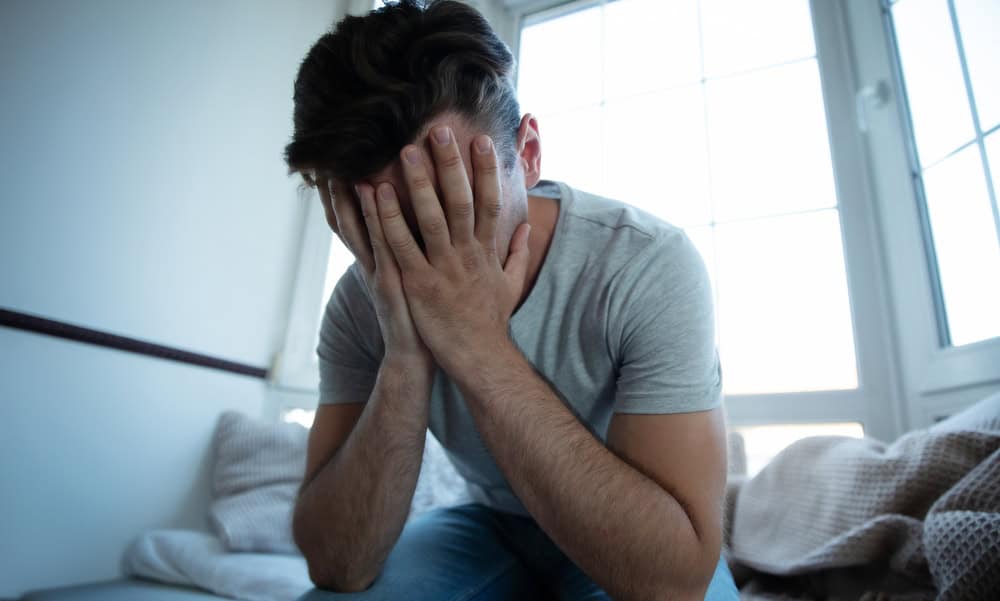
The Church of Jesus Christ of Latter-day Saints (LDS Church) is known for its organizational discipline, financial strength, and carefully crafted public image. But according to survivors, attorneys, and advocacy groups, the church’s response to sexual abuse allegations often prioritizes institutional protection over survivor healing.
Understanding how the LDS Church handles sexual abuse claims reveals a deeper pattern — one marked by secrecy, legal maneuvering, and controlled settlement practices.
The LDS Church has repeatedly stated that it complies with local laws and that its abuse reporting systems are designed to protect children. But internal documents, audio recordings, and whistleblower accounts suggest otherwise.
Survivor-led groups such as Protect Every Child, SNAP (Survivors Network of those Abused by Priests), and Mormon Stories have led grassroots efforts to expose these systemic failures and give voice to those the church has tried to silence.
One of the most controversial questions survivors ask is: Where does the money come from?
The LDS Church collects billions annually in tithing — voluntary donations equaling 10% of members’ income. Its wealth exceeds $265 billion, managed primarily by Ensign Peak Advisors.
Survivors and advocates have raised concerns that church settlements may be paid from these sacred donations. In 2023, The Guardian reported that survivors demanded transparency over whether tithing funds were being used to cover legal liabilities.
The church has not confirmed nor denied this, fueling ongoing criticism about financial secrecy.
In many LDS abuse settlements, survivors have been required to sign non-disclosure agreements (NDAs), legally binding clauses that prevent them from speaking about their abuse or the settlement terms.
Why NDAs Are Controversial:
Many survivors say they were pressured into silence and wish they had spoken out instead. In response, several states have introduced or passed laws restricting NDAs in sexual abuse cases, especially those involving children and religious institutions.
Publicly, the LDS Church claims “zero tolerance” for abuse. But behind closed doors, its legal approach often includes:
When survivors think about filing a lawsuit, the first question is often, “Do I sue the abuser?” But in many LDS Church sexual abuse cases, the real legal target isn’t just the individual who committed the abuse. It’s also the institution that allowed it to happen, failed to stop it, or actively covered it up.
If your abuser is still alive, they can often be sued directly. This includes bishops, youth leaders, missionaries, family members affiliated with the church, or anyone in a position of trust within the LDS community. In some cases, criminal charges may also apply.
Though part of the larger church structure, local LDS wards (congregations) and stakes (regional leadership units) may be held liable if local leaders failed to act on reports of abuse, discouraged victims from speaking up, or knowingly allowed abusers continued access to minors.
This is the official legal entity of the LDS Church, and often the primary defendant in civil lawsuits. It owns the church’s vast global assets and is responsible for centralized decision-making, including legal strategy, abuse protocol, and leadership oversight.
This entity has been named in dozens of lawsuits for its role in enabling abuse through systemic negligence, failure to report, and cover-up tactics.
In some cases, lawyers or individuals advising church leaders may be sued or deposed if they played an active role in suppressing abuse reports or pressuring victims into silence. While rare, these lawsuits are sometimes included in broader institutional claims.
In many LDS Church sexual abuse cases, the survivor never would have been harmed (or re-harmed) if the institution had acted responsibly. That’s why civil lawsuits target the broader church, not just to compensate the survivor, but to expose a pattern of institutional failure and push for systemic reform.
It’s not enough that abuse occurred. What strengthens a case and increases potential compensation is evidence that the LDS Church:
At SurvivorsRights.com, we help connect survivors with attorneys who know how to take on powerful institutions like the LDS Church. If you’re not sure who should be held responsible in your case, a legal expert can help clarify your options confidentially and at no cost.
You’ve lived with the weight of this long enough. Let us help you find out if justice is still within reach.
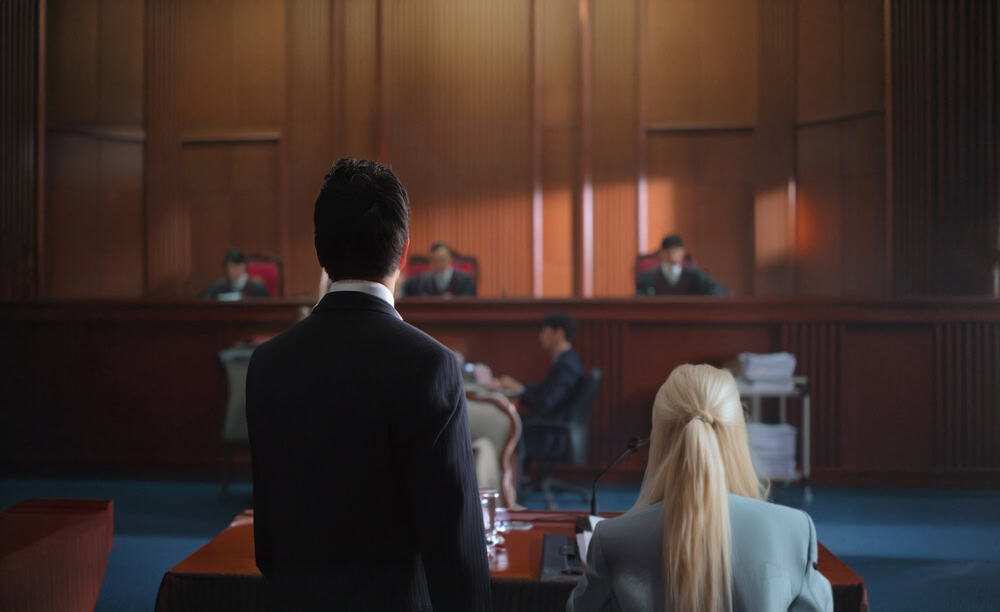
If you file a lawsuit against the LDS Church, you may be entitled to a wide range of damages.
Courts may award punitive damages when the LDS Church’s misconduct was especially egregious, such as when leaders:
Most LDS Church abuse cases settle out of court. Factors influencing settlement value include:
You’ve carried this weight long enough. It’s time to take your power back.
You may be eligible to file a lawsuit. Our intake team can help assess your situation and connect you with a qualified attorney. Fill out the brief, confidential form below to start your free case review.
Start My Free Case ReviewYes. Many sexual abuse lawsuits are filed using a Jane Doe or John Doe pseudonym to protect survivors’ privacy. Your attorney can help you request anonymity through the court.
No. You may still have a case if you were:
Fill out the brief, confidential form on this page so that we may connect you with an attorney experienced in LDS sexual abuse cases. There’s no obligation and no pressure — just support, clarity, and compassionate guidance.
Settlements vary depending on the severity of the abuse, long-term trauma, and the Church’s role in enabling or covering up the harm. Typical clergy abuse settlements range from $300,000 to over $1 million. Punitive damages and court fees may also be awarded.
Most of the LDS Church sexual abuse lawyers we partner with work on a contingency basis — meaning you pay nothing upfront. They only get paid if you win compensation through a settlement or trial.
Not necessarily. Many states have passed lookback window laws or extended statutes of limitations for childhood sexual abuse. Even if the abuse occurred decades ago, legal options may still be available — especially if the LDS Church played a role in covering it up.
You may still be able to come forward. Some NDAs have been challenged in court, especially when signed under pressure or involving minors. An attorney can review your situation and determine if the NDA is enforceable.
You don’t need to have everything up front. However, helpful documentation can include:
An attorney can help gather evidence and build your case.
Lawsuits often target the institution, not just the abuser. Defendants may include:
Not always. The majority of LDS Church abuse cases are resolved through confidential settlements before trial. That said, you have the right to decline a settlement and take your case to court if you choose.